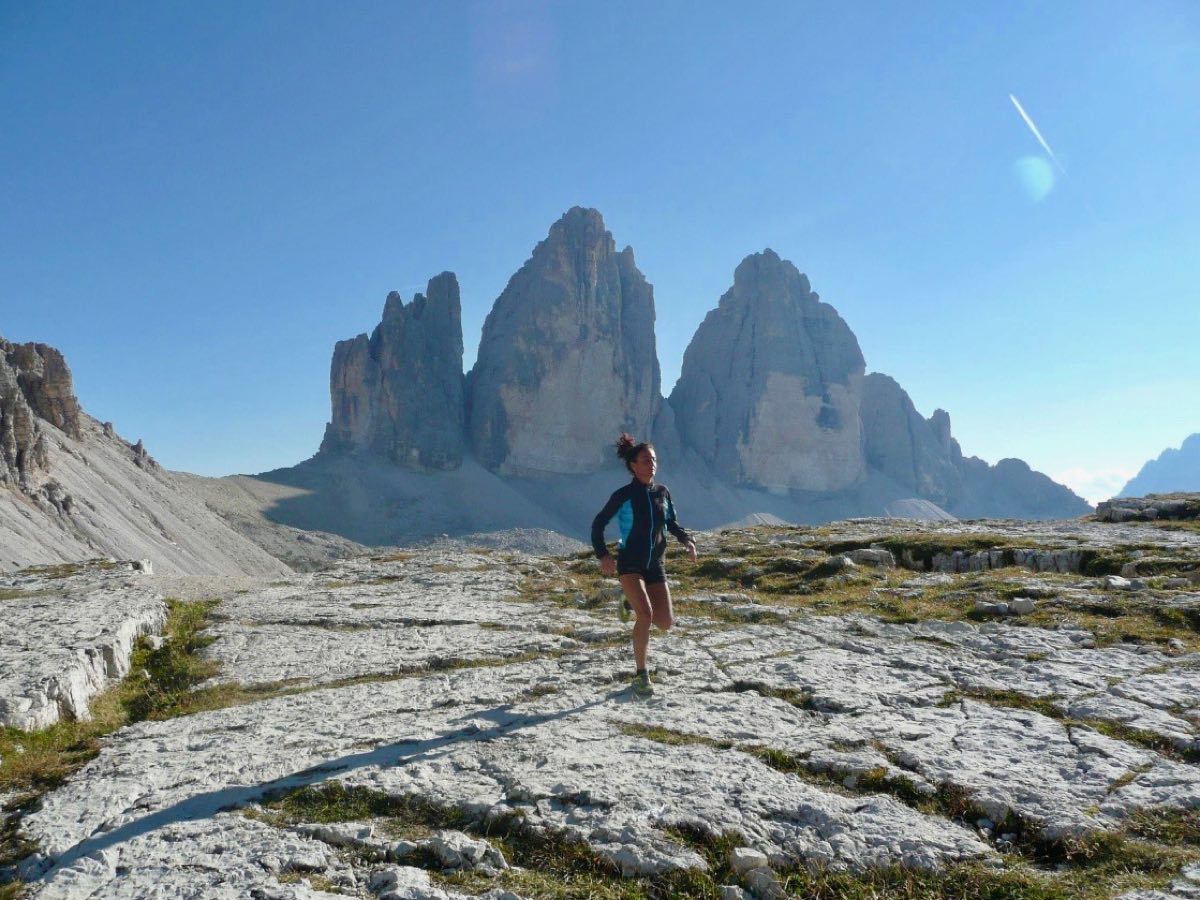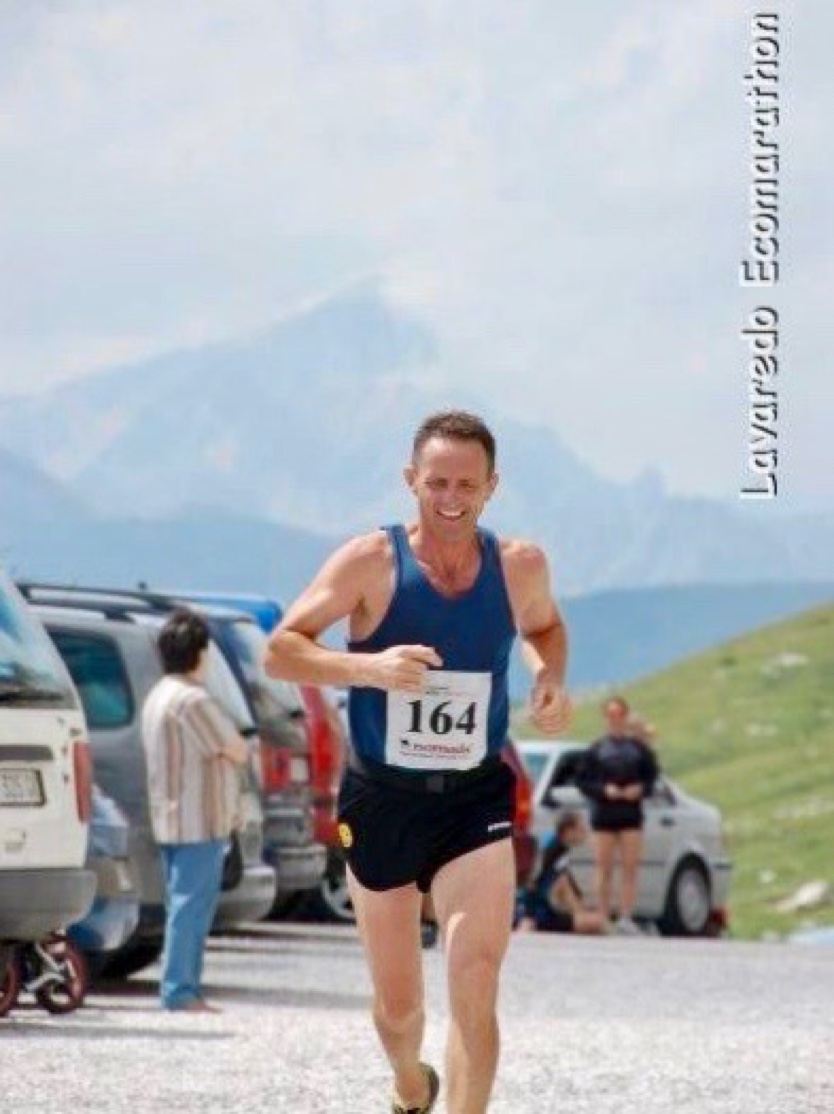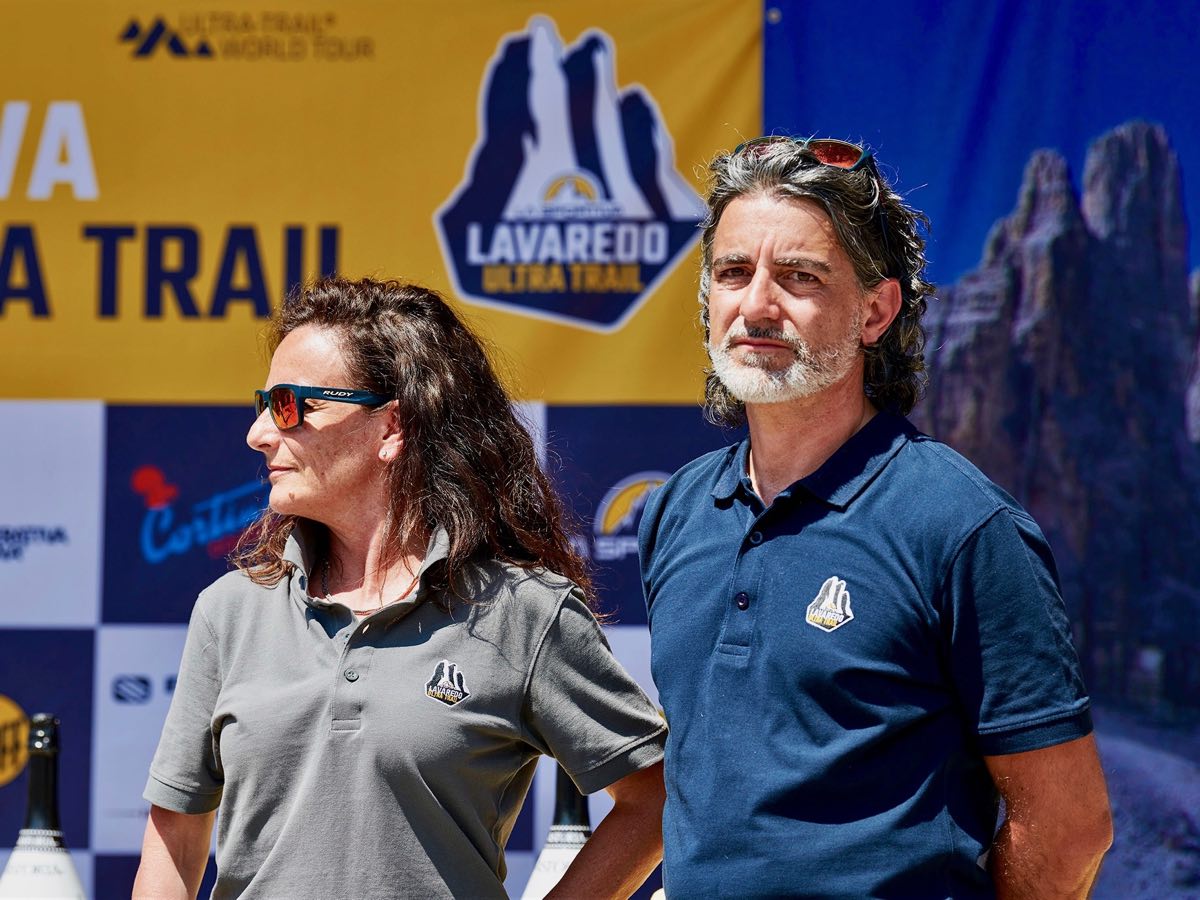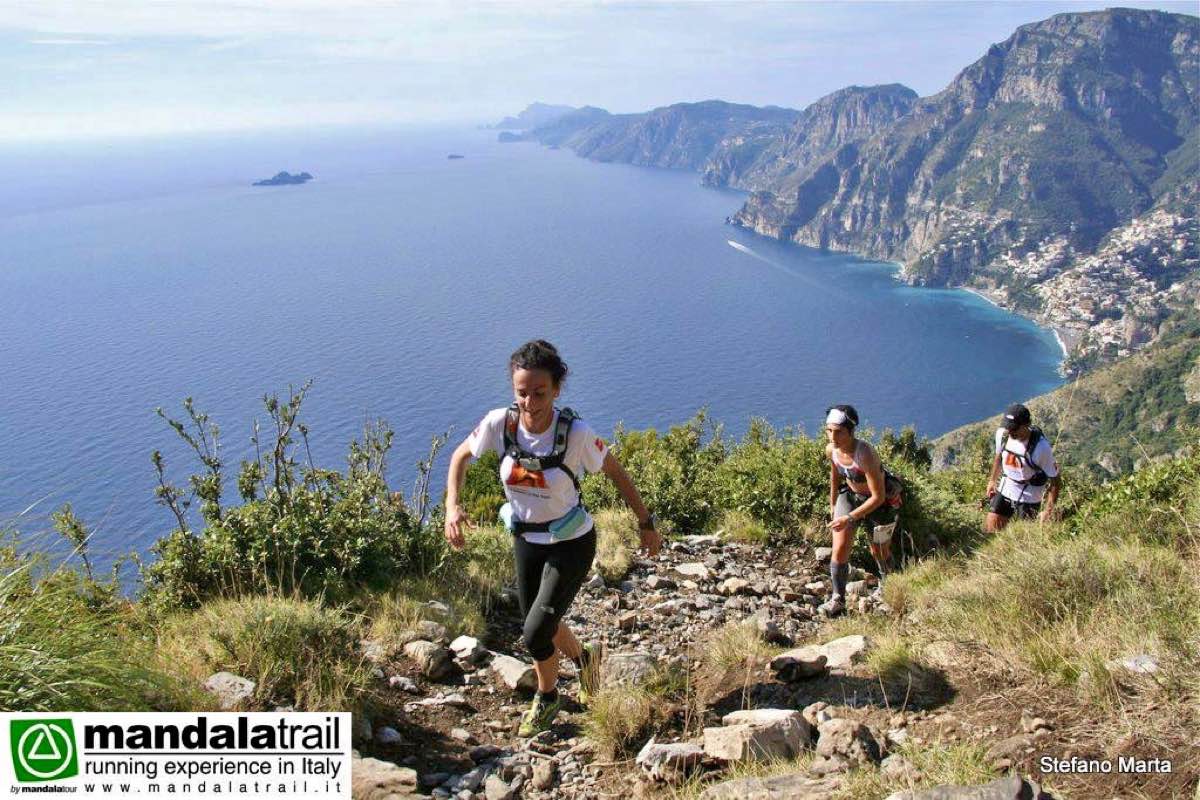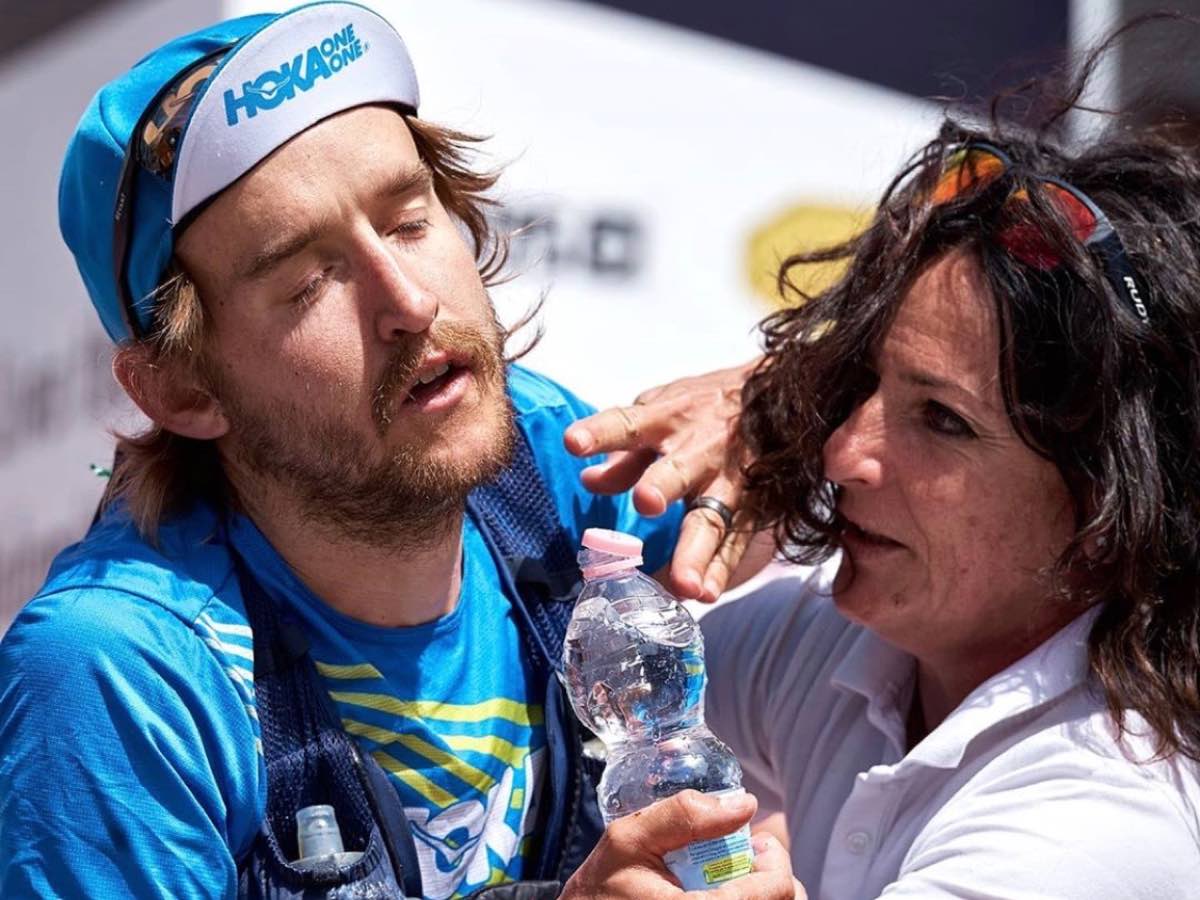When race director and ultrarunning pioneer Cristina Murgia met her business partner, Simone Brogioni, he had just launched an innovative endurance event in Italy, the Lavaredo Ultra Trail, a now 120-kilometer ultramarathon through the jagged, breathtaking Dolomites mountain range. It was 2007. Two years later, the exceptionally awe-inspiring and geologically unique landscape was inducted as a UNESCO World Heritage site. The protected area spans 550 square miles across nine mountain ranges and five Italian provinces in the country’s northeastern corner. From an aerial view, the disparate Dolomites form an archipelago. The scattered collection of spires, needles, and pinnacles is the only known area in the world with a combination of pale dolomite and dark volcaniclastic rocks, which create a vivid range of ethereal colors beneath the sky’s changing light.
As 250 inductive trail runners lined up for the inaugural edition of the Lavaredo Ultra Trail (LUT)—which started as a 46-kilometer route—long-distance mountain running events didn’t yet exist in Italy. Ultrarunning was not popular. Sport-specific equipment had not been developed. And Murgia was not yet an off-road runner, but the Dolomites captured her.
“Fourteen years ago, it was strange to run in the mountains,” says Murgia. Simone’s initial inspiration to create LUT was organic: the Dolomites were his backyard. “Simone had a house in the mountains, so he was passionate about the mountains and thought it would be nice to show the mountains to people. When I met him, in 2007, I joined his adventure and I started to follow him on the path. It was a big jump for me from the road to the trails,” says Murgia, who was a marathoner when she decided to become LUT co-race director.
“In the beginning, Lavaredo was a small race. At that time, [46k] seemed like a very long distance in the mountains. Ultrarunning had already gained popularity in the U.S., but ultrarunning wasn’t very popular in Italy. Lavaredo and one other race, called Le Porte di Pietra, a 70k, were the first two events to introduce long distances,” says Murgia. During those foundational years, participants wore “regular road running and hiking shoes.” No one was outfit with technical trail or mountain running footwear, packs, and nutrition. “Now, we all run with specific sunglasses, shoes, socks —everything is specialized for trail running. It’s funny to look at old pictures of the race and see runners with [outdated] backpacks that are strange compared to the hydration packs we have today. You’d carry a water bottle inside,” she recalls.
Murgia was mentally and physically strong. She had earned her black belt in karate. But during a combat, she badly broke her hand followed by four months in a cast. “After that, I was too scared to practice karate again; and I started running on the road, which led to marathons. Then I fell in love with trail running and mountains,” she says. Her first trail running race, in 2008, was the 26k Trail Delle Foreste Casentinesi, in Tuscany. She won. Two months later, she placed fourth female at the Ecomaratona del Chianti, another 26k. Her interest grew for traveling to and experiencing various races in spectacular locations. She has raced several times on Mauritius Island, where she took third place at the Royal Raid 35k in 2009 and 2013.
“It was amazing to start trail running. When you run a marathon, you just run, run, run with your watch. On trails, it is completely different. You see the landscape and feel the mountains, the flowers, and breathe the clean air, and feel the woods. That connection is something that never happened for me with a marathon, and I was very happy about that experience,” she shares.
Her passion has fueled her growth as a leader in the community, which other trail runners have observed. “Cristina is full of passion and excitement. She draws you in with her enthusiasm, impacts the sport with her vision and leadership, and keeps everyone close through her caring character,” says ultrarunner Tim Tollefson, who won the 2019 LUT. He also placed third in 2018, when he first met Murgia. “We have since connected at various races around the globe and kept in contact outside of events. What she and her team have created [with LUT]—an immersive, familial event that is community minded and promotes the ethos paramount in the trail community—draws many runners, myself included, back year after year for more,” Tollefson adds.
Over the years, Murgia’s business evolved alongside her excitement on trails. In 2008, she, Simone, and a group of friends founded the only trail running magazine in Italy, Spirito Trail Magazine, which started as a “webzine.” Then, in February 2009, the team launched the first-ever print issue. Ergo, the magazine became—and remained—the inaugural and sole print publication completely dedicated to trail running in Italy. Spirito continued with 12 print issues per year.
“The idea of founding a magazine came from a group of friends who loved trail running. Simone was the first director. We did a good job of starting a big project—we had no money. We had to find the first sponsor and companies needed to trust us on the project. We were in touch with all of the races, running companies, race directors, and athletes. We contributed a lot to the communication of trail runners in Italy, which helped the community. We worked with dedication and it took a lot of patience, working every day until 3 or 4 a.m. [Simone and I] produced everything. It was hard but also so nice and fun to work on the magazine. It has been a great experience all these years. We improved a lot and the magazine became more professional. We have a nine-person team, designer, and sponsors. Everything is more modern,” says Murgia, who has remained an editor for the magazine as well as the manager. Over the past few years, time has been tight, so she’s focused more on advertisement, as well as brand and race relations, than editorial work.
Murgia was born and raised on Sardegna, an island larger than the U.S. state of Vermont, which is 150 miles west of mainland Italy, across the Tyrrhenian Sea. She spent the first 18 years of her life on the island. Then, she moved to Florence for college, where she earned a degree in political science and international law. After founding the magazine, she took a journalism course to become a journalista publista, a specific certification in Italy that allows a professional to manage the business of publications in addition to reporting or contract work. In the beginning, Murgia wrote a lot of content for the magazine.
“We kept working on [promoting] the idea [of running long and in the mountains], and running became really popular in Italy. The reputation of our races grew, because the Dolomites are beautiful. Everywhere you go in the Dolomites, you find a stunning landscape you can’t find anywhere else. And that’s the main goal: for runners to enjoy the landscape,” she says.
LUT originally started “in Rifugio Auronzo, very close to Tre Cime di Lavaredo. Then it moved to Auronzo village until 2011,” says Murgia. Then, in 2012, Murgia and Simone moved LUT to Cortina d’Ampezzo, where their sponsor, The North Face, had a shop. Cortina hosted the 1956 Winter Olympics, so the small town is extremely famous, which helped push the race into a larger spotlight. The original route was expanded to 120k, and they added the 48k Cortina Trail. LUT also joined the Ultra-Trail World Tour. With the race’s evolution and spike in participation, Murgia wrote less for the magazine. She needed to focus on her role as race director. Next, they launched the 20k Cortina Skyrace. Then, two years ago, the 80k UltraDolomites route was introduced.
Today, the 120-kilometer race is one of the most-sought-after organized ultrarunning experiences in the world, which features an accumulative gain of more than 19,000 feet. The route winds through the iconic silhouettes of Tre Cime di Lavaredo, Cristallo, Tofane, Cinque Torri, Averau, and Croda da Lago.
“Each year, we have a total of 5,000 runners in four distances. We have 65% foreigners and around 60 different nationalities. Cortina is crowded Thursday through Sunday, and it’s very nice all weekend. The Cortina locals are happy to have the busy weekend,” Murgia says. She still works “24 hours a day,” as a race director. Her tasks include race marketing and developing race concepts.
When Murgia first became a race director, few to no women were involved in the industry’s leadership, business, or race participation. Murgia explains, “The space was male dominated. In Italy, it is still like that—people think men do everything better than women. People in Italy recognize Simone as the race director, and if they need information they call him. They don’t call me. If I’m talking with anyone abroad, they treat us equally. In the international community, I feel recognized. In Italy, it’s an old mentality. We are trying to change it, but women are still on the second place for Italian businesses. Even if you are watching the salary for a woman, women are paid less than men. Can you imagine that until a few years ago, women racers received less money than men in race wins? We really have a lot to do to change this and not only in running. Among our race participants, we now have around 20% women. As an industry, we have to help support and make the same opportunities for women’s involvement. For many of them, it’s hard, because they also care for the house and kids.”
Despite gender disparity, Murgia still became a pioneer of the ultrarunning industry from races to media and community development. “Cristina has been instrumental in developing, curating, and increasing access to trail running throughout Italy. Her events have drawn in runners and race directors from around the world which in turn has helped shape the global expansion of the sport,” says Tollefson.
Today, Murgia lives in the Dolomites, close to Cortina, and in Florence. Four years ago, “We introduced another race in Florence, called Ecotrail Florence, which is part of a project we joined,” she says. The concept of Ecotrail races is to create eco-responsible courses that are accessible to all that are held in major cities and suburbs. The courses celebrate the local natural and cultural environment while emphasizing education on respecting nature, in addition to promoting trail running. Ecotrail races are currently held in the metropolitan areas of 13 large cities including Geneva, Brussels, and Paris.
“Florence is beautiful. We have an 80k that starts in Florence and visits all of the hills around Florence,” Murgia explains. There is also a 43k and 18k distance.
COVID-19 has impacted their races, too. All of the LUT and Ecotrail Florence races were canceled for 2020. Simone and Murgia also had to make the hard decision to close their print publication. Murgia says, “It’s a happy and sad situation to reflect on and to change. We’ve published 135 issues. Now, we are working to develop a new approach online, to keep the magazine digital, at www.spiritotrail.it, but we won’t print it anymore. During the COVID-19 time, all of the races are canceled and we don’t have anything to write about. We have no races and no sponsors for magazine. After June, we won’t publish anymore. We don’t know if we will publish again next January when the situation gets better. We are thinking about that. Now, people prefer to read the news online and on social media, because they want to receive the information fast. With a magazine, you have to wait to receive it each month. Maybe this transition is better for the magazine.” The editorial also launched its weekly “Spirito Trail Live” virtual gatherings to share information about nutrition, races, brands, and other news.
When she’s not working, Murgia goes to Sardegna to visit her parents once per month. “I have to take the ferry and after 12 hours I get there,” she says. She’s also enrolled in a three-year course to become a sommelier, which she started two years ago. “I have a lot to study. In Italy, we have a lot of wine from all of the regions from the south to the north. In Italy, it is normal when you are eating for lunch and dinner, to eat with a class of wine. And I love beer, too,” she says.
Of course, Italy is also known for its incredible food, Murgia says, “You know, Italian food is very good, we have a lot of different regional foods—we have 20 regions and each one specializes in different food. Like carbonara, or ravioli, and also pizza. We have the best pizza in the world. I love the food in Italy—the food, the wine, and the cheese is the best. The French will hate me for saying so!”
Over the past few months, COVID-19 also impacted the mobility of Italians. “From the beginning of March until middle May, we had a strict law in Italy and in almost all regions that we could walk or run only around home. We could only train 200 meters from home, and that’s really not far. Now, we can move and go around and train. Now, people can go to the mountains,” she says. Murgia is starting to train again, after taking many years off from racing. She’s adapting to meet her body’s current needs. “I’m 52 years old. It’s difficult when you see how the body changes and you are not as strong as before and it’s difficult to start again. But, my goal is to keep training and do the things I used to like very much. With [COVID-19], the situation is really unknown. We don’t know how and what things will be like this year. But, I want to do a short race. My distance would be around 20k—that is the best to start and not too painful. I want to feel what it is like to run with a group and not alone. When you run and are tired and need to arrive at the finish line and you are crying–I want to feel those feelings again.”
Call for Comments
Have you run Lavaredo Ultra Trail or met Cristina Murgia? Leave a comment to share your story of her and the leadership she provides!
